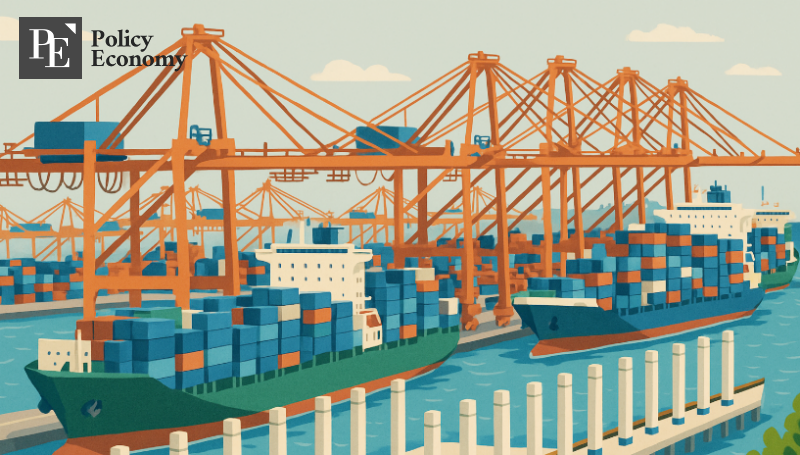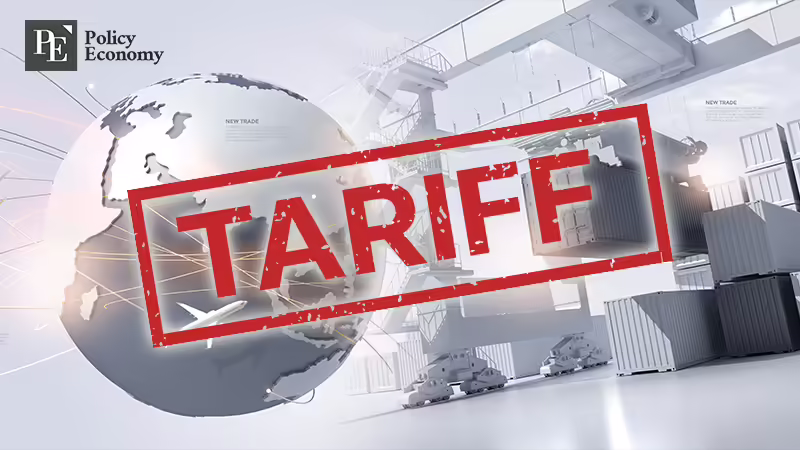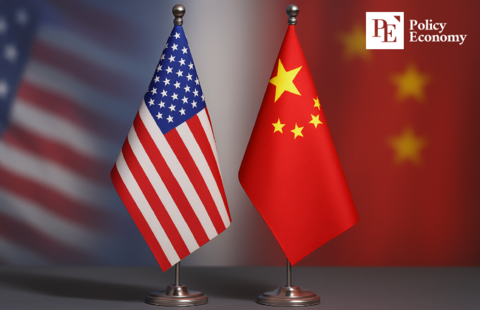"Shipping industry hit by fallout from U.S.-China tariff war — Surge in 'blank sailings' amid declining cargo volume"
Input
Modified
Voyages suspended amid declining cargo volume and downward pressure on freight rates Freight rates fluctuate by route, global logistics industry on alert Mixed outlook expected to continue due to impact of U.S.-China trade dispute

The global shipping industry is being rocked as the Trump administration ramps up reciprocal tariff measures. On trans-Pacific routes between Asia and the U.S., blank sailings (canceled voyages) have surged, and freight rates are swinging sharply by route, signaling what many call a "tariff tsunami" hitting global logistics.
Asia–North America Shipping Lines Cancel Voyages One After Another
According to Danish shipping analysis firm Sea-Intelligence on the 24th, blank sailings on Asia–North America routes have significantly increased. Blank sailings are a supply-side adjustment strategy used by shipping companies to minimize losses when demand or freight rates suddenly drop.
Carriers are now expecting to reduce capacity by 367,804 TEUs (1 TEU = one 20-foot container) between weeks 16 and 19 of this year (April 14–May 4). That’s over 12 times higher than the forecast made in mid-March (26,484 TEUs). Sea-Intelligence attributes this reduction to tariff uncertainty, which is pushing both shippers and carriers to adjust their supply chains. The U.S. has imposed 145% tariffs on Chinese imports, and China has retaliated with 125% tariffs on U.S. goods.
As a result of the tariff war, sea cargo volumes headed to the U.S. have slowed. Last month, total cargo throughput at U.S. ports was 14.388 million tons, up only 0.4% year-over-year, compared to a 2.1% increase in March last year.
Stephen Lamar, head of the American Apparel & Footwear Association (AAFA), told CNBC:
“High tariffs and sudden policy changes are causing serious supply chain disruptions.”
Allan Baer, CEO of ocean carrier OL USA, added:
“Almost all China-related business has ground to a halt.”
South Korea’s HMM Adjusting Capacity as Well as Europe Routes See a Windfall
HMM, which has significant exposure to the Asia–North America route, is also adjusting supply. Last month, its idle fleet ratio (percentage of container ships not in operation) rose to 0.7%, up 0.1 percentage points from the previous month. HMM generated ₩4.27 trillion (~$3.1 billion USD) from its Americas route last year, accounting for 36.5% of its total revenue (₩11.7 trillion).
A shipping industry source noted:
“HMM has no choice but to manage its fleet flexibly in response to demand.”
The tariff shock is also creating volatility in freight rates by region. Since the new U.S. tariffs took effect, rates for Asia–North America routes have declined due to falling cargo volumes. In contrast, rates for Europe-bound routes have risen, as shipments originally intended for the U.S. are being diverted to Europe instead.
A shipping executive said:
“The recent rebound in European freight rates is partly due to previous declines, but also because products made in East Asia are being redirected to Europe or other markets due to limited demand in the U.S.”
Tariffs are also affecting routes to Japan and Southeast Asia, creating route-specific rate patterns. This has led to growing expectations of an increase in “bypass exports”—where goods are rerouted through countries like Vietnam or Thailand before heading to the U.S.
A Korea Ocean Business Corporation official noted:
“We could see more exports routed through Vietnam or Thailand, where goods are packaged or assembled locally before being shipped to the U.S.”
Indeed, freight rates on Southeast Asia routes rose 0.7% in just one week, from 445 to 448.

Shipping Industry May Re-Enter a Downturn
If U.S. tariffs on China persist, a global decline in cargo volume seems inevitable. After the COVID-19 pandemic caused supply chain chaos, shipping companies ramped up orders for new container ships to meet surging demand. As a result, global fleet capacity has been growing by about 7% annually.
However, demand for ocean container shipping is only growing by around 3% per year, leading to an ongoing oversupply of vessels. The global container fleet currently stands at about 31.1 million TEUs, and the order backlog is another 8.96 million TEUs. When combined, this would bring total capacity to over 40 million TEUs, potentially flooding the market as new ships are delivered.
Shipping companies have been taking countermeasures since the 2023 plunge in the Shanghai Containerized Freight Index (SCFI)—including canceling up to 10% of voyages, blank sailings, slow steaming, and implementing General Rate Increases (GRIs). However, these strategies are ultimately limited, as they go against the fundamental supply-demand dynamics of a market economy.
Bulk carriers could also take a hit, as China's grain and energy imports may be restricted due to reciprocal tariffs.
Koo Kyo-hoon, Chairman of the Korea International Freight Forwarders Association, stated:
“We fear a steep decline in global bulk cargo transportation, and with oversupply in the bulk sector, the Baltic Dry Index (BDI) is also expected to fall.”
In short, both container and bulk shipping are facing a perfect storm of weak demand and excess supply, raising the likelihood of a renewed market downturn.





















